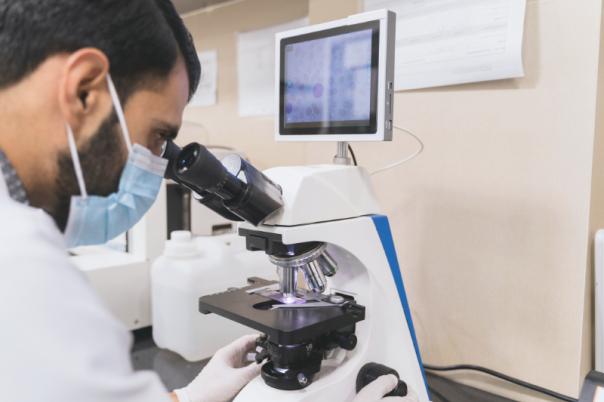Key Takeaways
- AI is powerful—but only with good data: Artificial intelligence can reveal hidden patterns in brain disease, but without large, standardized, high-quality datasets, its potential remains limited.
- Transparency is key to trust: Regulators and clinicians need interpretable, auditable AI systems—black-box models won’t make it to the clinic.
- Progress requires patience and openness: Real impact will come from collaboration, data sharing, and learning from both successes and failures across research and regulation.
The conversation began as many in translational medicine do—with optimism balanced by fatigue. Around the table sat neuroscientists, data scientists, clinicians, and innovators from biotechnology and pharmaceutical research, united by a single question: Can artificial intelligence truly help us understand the human brain—and bring diagnostic tools to patients faster?
Over the course of an hour, that question unfolded into a grounded reflection rather than a declaration. The panel offered not a grand vision of technological triumph, but a sober assessment of what it will take for AI to meaningfully transform neuroscience and medicine.
A Table of Perspectives
The discussion brought together voices representing every step of the biomedical pipeline:
- A physician-scientist balancing biomarker discovery, AI research, and clinical translation.
- A biotech innovator developing precision oncology tools that complement established therapies.
- A computational team applying machine learning to neurodegenerative diseases.
- A start-up leader advancing multi-omics platforms for complex neurological disorders.
Each perspective was distinct, yet the same challenges surfaced repeatedly—data scarcity, regulatory uncertainty, and the stubborn complexity of human biology.
The Heterogeneous Reality of Disease
The panel began with a reminder that biological systems rarely conform to clean categories. In neurodegeneration, for example, “no patient is purely one disease.” Real individuals are mosaics of vascular, metabolic, inflammatory, and genetic influences. What may seem like discrete diagnostic entities in research often merge and overlap in clinical reality.
This heterogeneity complicates biomarker discovery and clinical translation. While stratifying patients into subtypes may yield scientific insight, those distinctions often blur once findings reach the clinic. The use of blood-based biomarkers, long seen as a path toward less invasive testing, introduces yet another layer of abstraction—attempting to read the brain’s molecular signals from peripheral circulation. As one expert put it, “You’re measuring the system, not the organ.”
The consensus was that such proxies are imperfect and inherently noisy. But despite their limitations, they remain the most accessible route to understanding diseases that cannot be directly sampled in living patients.
AI Promises Clarity—But Only If the Data Exist
All participants agreed on one fundamental truth: artificial intelligence is only as powerful as the data it learns from. Uniform, longitudinal, multimodal datasets—linking imaging, molecular, and clinical variables—are still rare. Standardisation across cohorts remains inconsistent, hindering reproducibility and validation.
“We can’t keep pretending algorithms can fix incomplete data,” one scientist observed. Algorithms amplify the patterns within data; they do not compensate for its absence or imbalance.
Yet the potential remains immense. When applied to comprehensive datasets, AI can detect subtle disease subtypes invisible to human eyes, link molecular profiles to rates of progression, and identify predictive biomarkers that guide therapeutic decision-making. Properly implemented, AI could turn biological heterogeneity from a confounding factor into a rich resource for discovery.
The Regulator’s Paradox
For every note of optimism came a dose of realism: regulation remains the principal bottleneck.
Participants recalled how even well-established biomarker assays have faced protracted adoption timelines—sometimes taking years to reach routine clinical use despite robust validation. AI-based diagnostics, with their adaptive algorithms and evolving outputs, add layers of complexity that traditional regulatory frameworks struggle to accommodate.
“It’s far more expensive, far more likely to fail, and regulators still lack clear guidance,” one participant admitted. Even large organisations with established compliance systems find it difficult to shepherd AI-driven diagnostics through approval processes. For smaller enterprises, the challenge can be prohibitive.
The group agreed that interpretability is the key to progress. Regulators need tools that can explain how conclusions are reached—not black boxes that generate scores without rationale. Transparent and auditable AI systems could shift regulation from resistance to collaboration.
Learning from Failure—and Preserving What’s Lost
A recurrent theme was the need for humility and learning across projects. Many participants lamented how frequently valuable clinical-trial data are lost when a program concludes. Once funding ends, teams dissolve, servers are wiped, and datasets—especially those from unsuccessful trials—vanish.
These so-called “failures,” the panel argued, hold immense value. Negative or inconclusive studies can reveal where stratification strategies went wrong, where biomarkers lacked robustness, or where data integration faltered. Making such data accessible—at least in anonymized, aggregated form—could save others from repeating the same mistakes.
Publicly funded projects increasingly require open-data sharing; participants suggested that private industry should adopt similar norms. The collective progress of the field depends as much on understanding what doesn’t work as on celebrating what does.
The Double-Edged Sword of AI Discovery
Despite the challenges, no one doubted AI’s transformative potential in research. Machine learning accelerates discovery, integrates high-dimensional data, and reveals molecular and structural patterns beyond human capacity. Analyses that once required months can now be completed in days, uncovering connections that reshape understanding of disease mechanisms.
The challenge lies in translation. Regulators and clinicians require simplified, interpretable models that can be validated, audited, and trusted in real-world settings. As one participant summarised: “Internally, you show a mountain of evidence. To the regulator, you show the tip.”
Even so, the consensus was that adoption is inevitable. As AI demonstrates measurable benefits—reducing costs, improving accuracy, and speeding access to effective treatments—health systems and regulators will have to evolve alongside it. “They’ll come on board when they see it helps patients and saves money,” one expert predicted.
Patience, Transparency, and Collaboration
By the end of the discussion, the room converged on an unexpected theme: patience. The intersection of AI and neuroscience demands not only technical sophistication but also persistence, open collaboration, and regulatory empathy. The road from discovery to impact is slow—but progress is real.
The path forward will require data sharing across institutional boundaries, clear ethical frameworks for algorithmic transparency, and mutual understanding between developers, clinicians, and regulators. Only by building this shared foundation can artificial intelligence fulfil its promise—not as a quick fix, but as a genuine partner in the quest to understand and heal the human brain.








